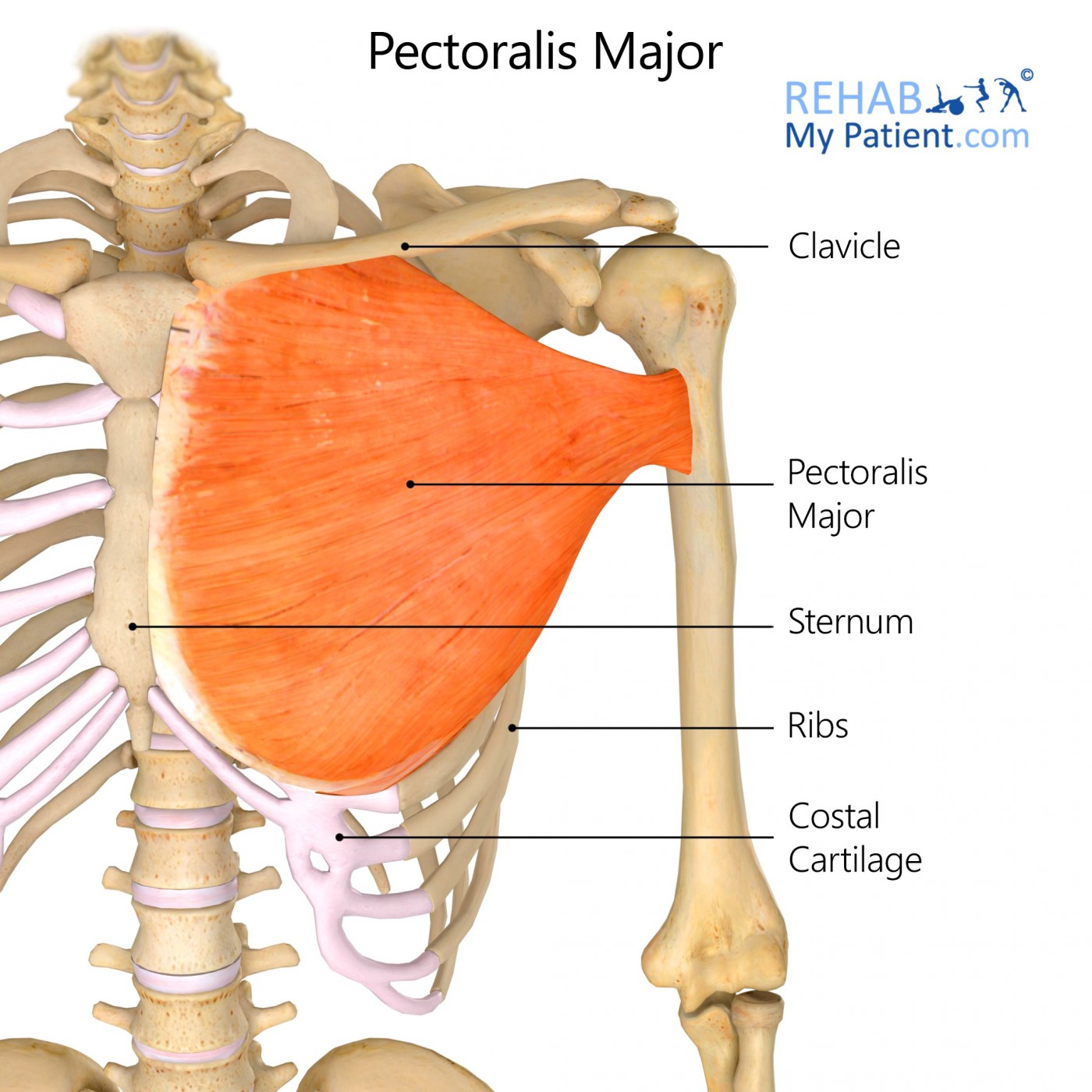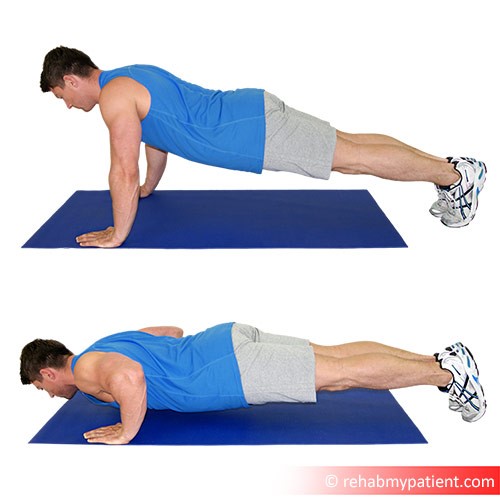
General information
Pectoralis major is a large, thick, and fan-shaped muscle located on the chest that is responsible for moving the shoulder.
Literal meaning
The greater muscle of the breast.
Interesting information
Pectoralis major, also commonly known as the “pec” muscle, is the largest and most often utilized muscle in the chest, which is responsible for rotating the arm. The pectoralis major is a common muscle injured in weight-bearing or contact sports, such as football, wrestling, martial arts or weightlifting. Injuries to the pectoralis major include strains, pulls and tears. When the pectoralis major muscle has been torn, surgery is required for reattachment, then followed up with physical therapy. For strains and pulls, application of ice to the affected area is recommended for 15-20-minute periods, as well as resting the muscle. NSAIDs, such as ibuprofen, is used to alleviate pain and inflammation. Typical symptoms of injury to the pectoralis major include severe pain on either side of the chest area, loss of strength when lifting an object, or difficulty moving the arm across the chest. Poland's syndrome is a rare genetic anomaly where the pectoralis major is either absent or severely underdeveloped on one side of the chest.
Origin
Anterior surface of the sternum and costal cartilages one through seven, sternal half of the clavicle.
Insertion
Lateral ridge of the intertubercular groove of the humerus.
Function
Internal rotation of the shoulder.
Aids in adduction and extension of the arm.
Nerve supply
Medial and lateral pectoral nerve branch.
Blood supply
Thoracoacromial artery from the deltoid and pectoral branches.

Relevant research
A complete tear of the pectoralis major is the most severe injury seen with relation to this muscle. Finding methods of repair that optimize full rehabilitation of the muscle to nearly full functionality is crucial. One study utilized five male patients, all involved in intensive sports, who sustained a complete tear of the pectoralis major tendon. They were each treated within two weeks of their injuries with a surgical technique using endobuttons to see if it would strengthen initial fixation and allow for more complete rehabilitation. Four of the five experienced excellent outcomes, with the fifth having a good outcome. There were no clinical re-tears, and the postoperative isometric power in horizontal flexion of the injured shoulder was recorded to have complete recovery.
Yoshiyasu Uchiyama, Seiji Miyazaki, Tetsuro Tamaki, Eiji Shimpuku, Akiyoshi Handa, Hiroko Omi and Joji Mochida (2011), “Clinical results of a surgical technique using endobuttons for complete tendon tear of pectoralis major muscle: report of five cases”, Sports Medicine, Arthroscopy, Rehabilitation, Therapy & Technology 2011, 3:20 doi:10.1186/1758-2555-3-20.
Pectoralis major exercises
Push ups

Lying face down on the ground, place the palms of your hands a little more than shoulder-width apart on the ground. Place your toes on the ground so that your heels are elevated. While keeping your body straight, raise your body off the ground by pressing with your hands and extending your arms until they are straight. Lower your body back down but not completely to the point of touching the ground. Complete ten repetitions for three sets. You can increase the number of repetitions as strength increases.
Cable crossovers
Utilizing a high cable pulley machine with dumbbell hand attachments on it, grab a cable attachment in each hand. Stand facing away from the machine with one foot in front of the other and the knees having a slight bend to them. Position your arms at shoulder level and bend the elbows slightly as you pull the cables forward and together to the front of your body. Return to the starting position while maintaining the bend to the elbows. Perform this for three sets of ten repetitions each.
Sign Up
Sign up for your free trial now!
Get started with Rehab My Patient today and revolutionize your exercise prescription process for effective rehabilitation.
Start Your 14-Day Free Trial